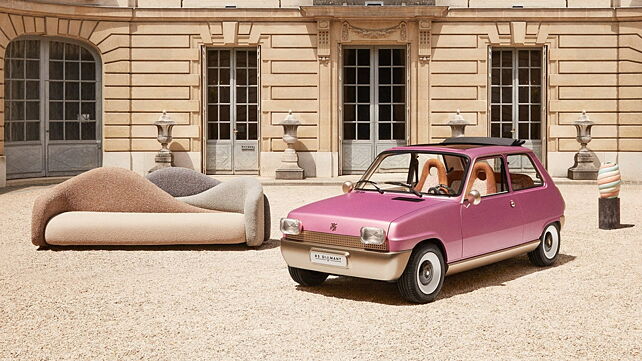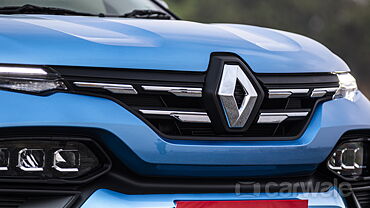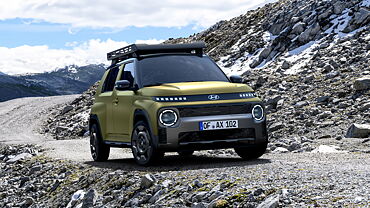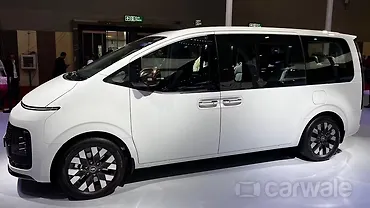
The name Renault 5 may not ring many bells in India, but it had the same impact on the car-buying public in Europe as the Maruti Suzuki 800 for folks here. Launched in 1972, the Renault 5 became one of the first cars to adopt a manufacturing and design philosophy which had endured to this day. Compact exterior footprint, front-engine, front-wheel-drive drivetrain, monocoque chassis, and maximised interior space — all things we take for granted in hatchbacks today — were used to great effect to introduce a new era of motoring 50 years ago with the first-gen Renault 5.

A new, all-electric car will feature this iconic name again, with the hopes that it will be affordable and funky enough to match the massive 50 lakh sales numbers garnered by the first-generation model over its 12-year production run. In the run-up to the unveiling of the new car, Renault is drumming up interest by showcasing a completely different concept car — the 5 Diamant.

This show car was designed by the Renault Design Colours & Trims team in collaboration with the critically acclaimed architect and interior designer Pierre Gonalons. Pierre also used the expertise of some of the most talented French artisans to create a car that highlights rare crafts and innovative techniques in an interesting mix of automotive and interior decoration designs and materials.
There has been a move toward simplicity with a focus on details And this silhouette, from all angles, will look familiar to those who know the classic Renault 5. Not to mention, the attention to detail is delightful.

The dual-tone paint scheme harks back to the first-gen model but utilises multi-layer paint for the main body along with complementary paint for the bumpers, door runners, and some highlights. The bodywork paint scheme contains three elements — a base pink mixed with gold pigments layer, with a frosted varnish on top. This makes the 5 Diamant shine with a golden tinge under sunlight while also giving it a blueish tone under low light conditions.

Then, the headlights and the taillamps are not integrated into the fascia, unlike in the original car. This along with the diamond-like treatment, because Diamant means diamond in French, gives this show car a unique look. The grille is as wide as the fascia thanks to the headlights being given a gem-on-a-ring-like treatment and is painted subdued golden. Hidden underneath the grille is a white LED light bar which can light up as one unit or in segments with animated patterns.

Further, the hood features a badge which combines Renault’s modern logo with Pierre Gonalons’s initials and is gilded by Paris-based atelier, Bertin-Aubert. Other gilded parts on the car include the rounded door ‘handles’, window winders, gear knob, and the stylised sun-shaped monograms on the wheel centre caps. The wheels are fitted with wide 175/65 R16 tyres, giving the 5 Diamant a grown-up and more planted look as compared to the original car.

Peer into the cabin through the canvas roof and you find that the ‘simplify but amplify’ theme continues here too. In fact, the expertise of Pierre Gonalons and other artisans is quite evident.

The highlight is the squiggly steering wheel, which is made of marble. Yes, marble! Specifically, it is made of the Grand Antique d'Auber marble which was cast into malleable tubes by Paris-based firm Minéral Expertise. Renault claims that despite its unusual shape, the steering wheel can be used to drive the Diamant like any other road-legal model.

Then, the floating lower centre console features a more traditional carved piece from the same marble, featuring a scooped-out top to place knick-knacks, and a dedicated slot for the gear lever.

Most of the dashboard is covered with horsehair fabric, which was hand-woven by workers at Le Crin, a century-old workshop based in Challes, Sarthe. Behind the steering wheel, the instrument cluster consists of three separate round screens — one acting as the speedometer, the other showing the battery charge level, and the third displaying the time.

The centre console features a cutout to keep one’s smartphone — the only way to access multimedia or navigation in the car. Not only this, the simple box-like shape on the passenger side of the dashboard houses the glove compartment, whose cover is also made of marble.

The seats feature textile covers in a dual-tone pattern. Meanwhile, the mohair wool floor carpets are made by tapestry artisans at Pinton. The combined feel of all these parts provides the 5 Diamant with that comfortable living room-like ambience. Underneath this showcase of artistry and craftsmanship is modern technology. The doors feature fingerprint-based locks, the instrument cluster is all-digital, and the infotainment is provided by a smartphone.

The first-generation Renault 5 featured everything from a 36hp, 782cc, four-cylinder petrol engine under the hood to a 158bhp/221Nm, 1.4-litre, four-cylinder turbocharged petrol monster sitting just behind the front seats. The Renault 5 Diamant is powered by a modern all-electric drivetrain, specifications of which have not been revealed yet.

Now, while we drool over the new Renault 5, which may not make its way to India, here’s a link to Renault’s current lineup of cars — for that’s the closest we can get to it in our country.








































